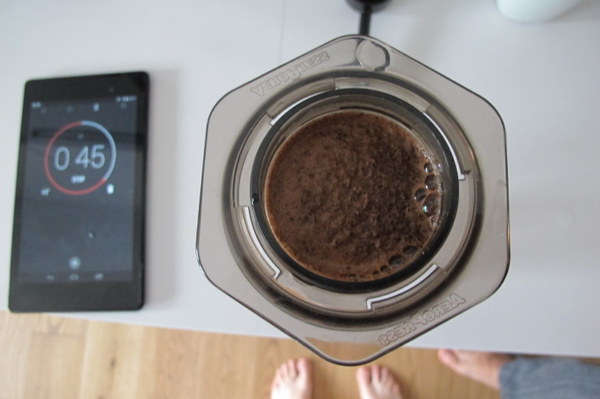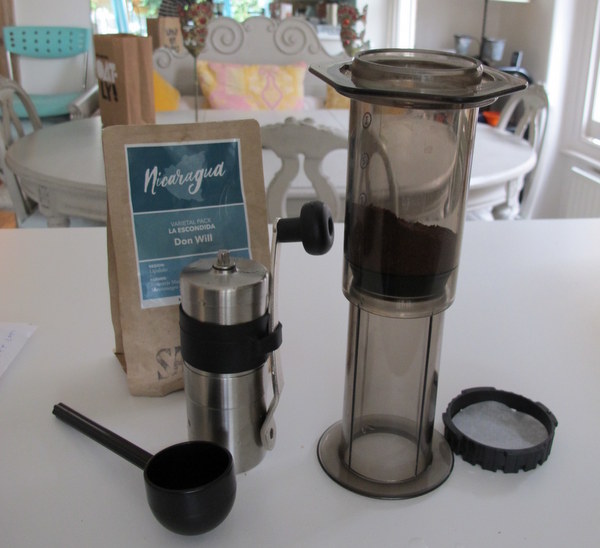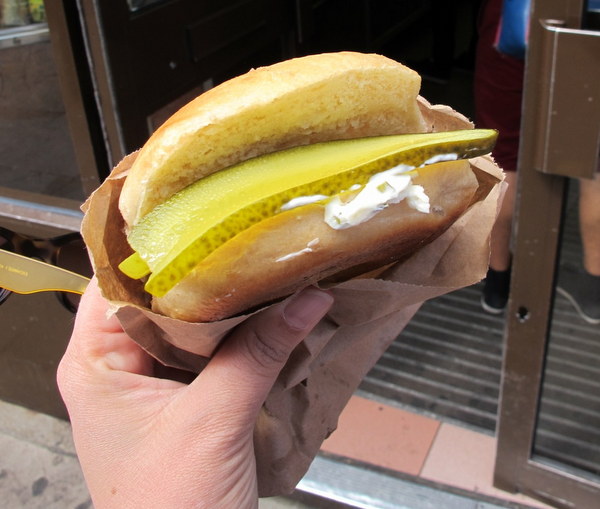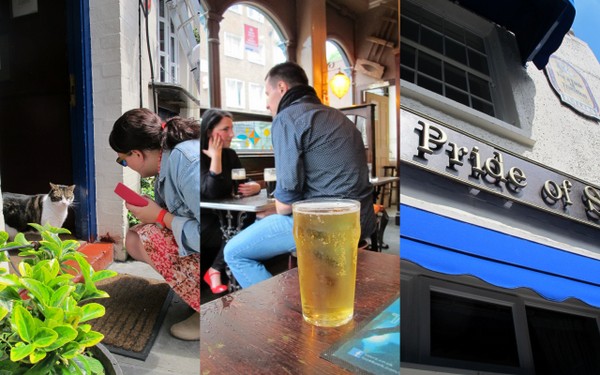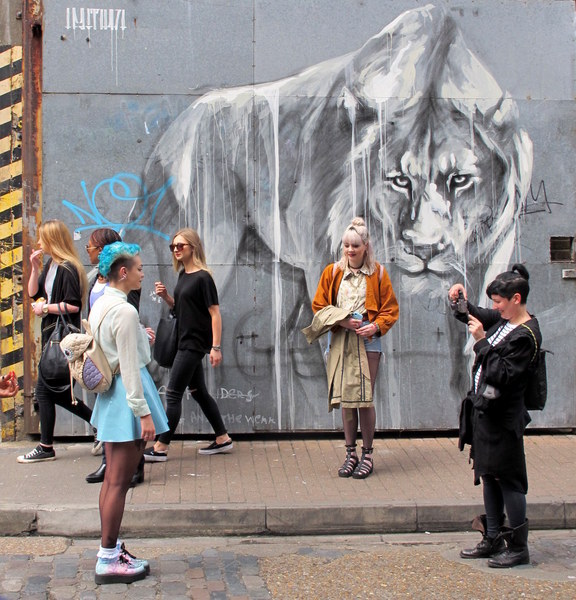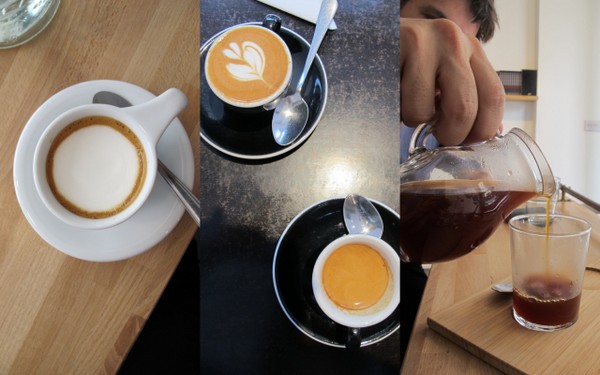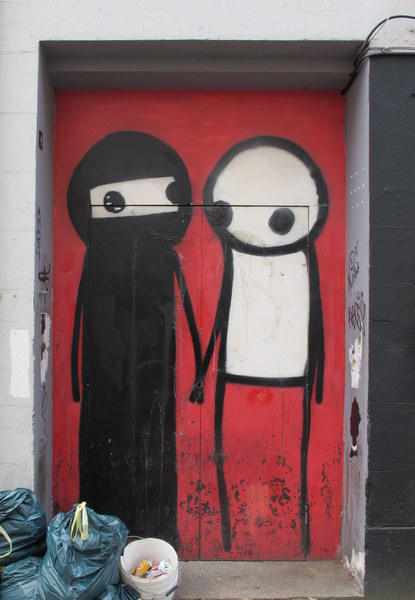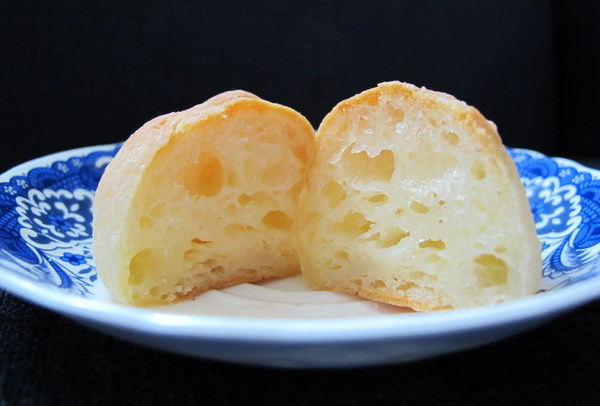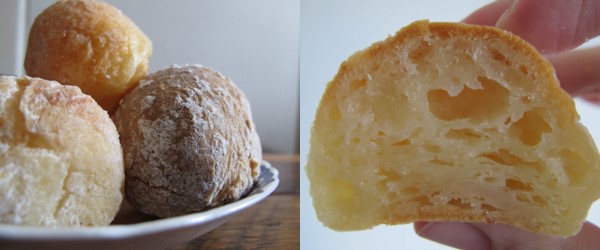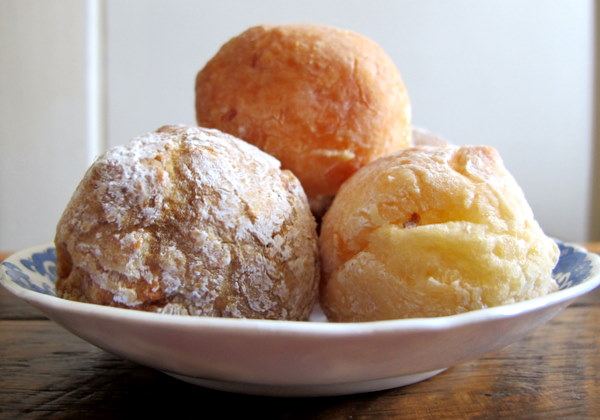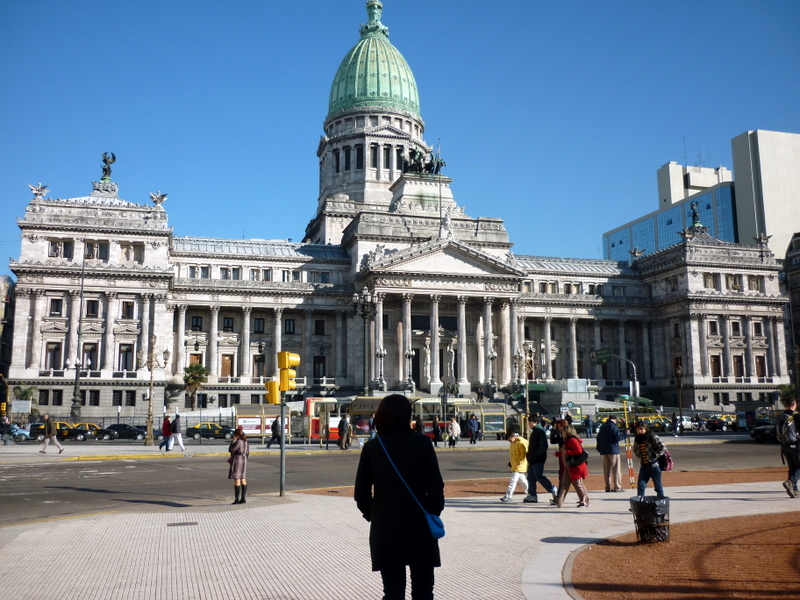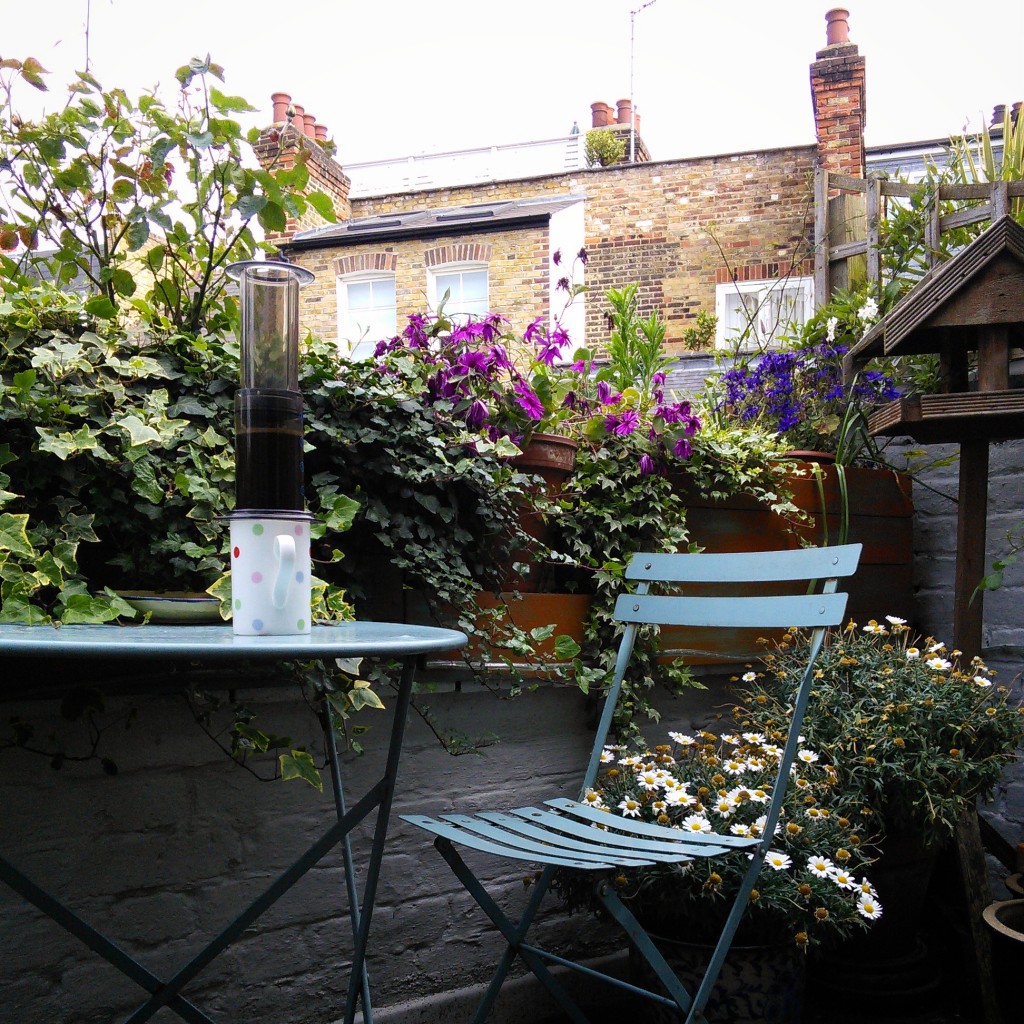
Make the aeropress your backup.
We coffee addicts, and even those of us who are coffee dabblers, usually have a go-to joint for our caffeine fix. But what of those particularly hectic workdays when you barely even have time to leave your desk? Or those rare and marvellous occasions when you find yourself travelling through unfamiliar lands, and you find that a good cup o’ joe is all too rare, and none too marvellous? In these situations, I put it to you that the consistent, tea-like gradual release caffeine buzz that is Aeropress is your best bet.
‘Third wave’ or filter coffee can often seem an overwhelming prospect, not only for its high-school-chemistry-looking gadgetry and need for precision, but also its almost dogmatic rejection of all things lactose-based (or adjacent). But it doesn’t have to be that way. In fact, in environments where a good coffee can be hard to find, it could be your salvation.
To become a competent (read: better than instant coffee or bad espresso) aerobrewster, you don’t need much, just:
A few abstract items:
• The ability to learn a new skill
• A willingness to drink black coffee
A few concrete items:
• Roasted coffee beans (as good quality as you can get your hands on)
• An aeropress
• The coffee scoop and filters that came with it
• A hand grinder (this one grinds well, is easy to use and tiny – it fits inside the aeropress itself)
• Your phone, if you can be bothered to time your brew
• A kettle, water
• A coffee mug
Nice-to-haves:
• Digital scales. Accomplished brewers consider these a must-have, if you already have some, use them, otherwise I think you’ll be ok.
What you do
1. First off, get everything together. Fill the kettle and set it to boil. You want boiled water that has cooled slightly (about 80 degrees).
2. Scoop in a scoopful of coffee and grind away until all the beans are ground. Set the aeropress up as above; the inversion method is the easiest. Pour in the ground coffee.
3. Dampen one circle of aeropress paper with a few drops of water and place it in the lid.
4. Set a timer for up to two minutes. Start the timer. Slowly pour in the boiled water over the course of about 20 seconds, trying to evenly coat all the coffee grounds you can. Agitate the aeropress slightly (either with a teaspoon or just twirl/shake it a touch) to make sure there are no pockets of dry grounds.
5. When there are only about 20 seconds left on the timer, screw the lid on the top aeropress and place a mug upside down on top.
6. Flip the entire thing, mug and aeropress over so the aeropress is on the top and the mug is on the bottom. Slowly press all the water through the aeropress until the time is up.
7. If you wait a few minutes, when you take the lid off the aeropress to clean it, you can push the wet coffee grounds out in one neat puck.
8. Savour your coffee as it cools and the flavours change.
Have you tried aeropress? Have you had good results?
We step up to the passport counter in Heathrow and the Border Force man takes a look at our pair of mismatched passports; one Aussie and one EU.
‘So how do you two know each other then?’
An innocent enough-sounding question, it has the air of small talk at a dull party, but it is asked in quite an aggressive way, and I’m confused after 7 hours of flying. It seems out of context and I feel my answer will determine (or rather, this man will) whether or not we’re allowed in to Britain. Struggling for a middle ground between recounting our entire romantic history and telling him to get fucked, I blurt out
‘We’re, you know…in a relationship?’
He seems ok with this and after determining we’re here for a holiday and a conference he lets us through.
After shiny silver Dubai airport with nary an accusing sign or announcement in sight (one gets the sense no one would dare ruffle the pristine environs with activities so base as eating, smoking or talking loudly on their mobiles), we’re greeted by a gaggle of signs instructing us wheretogowhattodowhatnottodowheretostandandsoforth. At the baggage carousel, an announcement comes over the PA asking parents to watch their children and don’t let them climb on it as ‘it is not a playground.’ The passengers laugh; it cuts through the tension to know we all find this place equally ridiculous and we’ll be out soon.
Fast forward to our eventual arrival in the vibrant hipster inner-city hub of Shoreditch. We’re staying steps away from Brick Lane’s curry houses in the slightly cheaper suburb of Spitalfields, pretty much the street art capital of the world, and I’m told the coffee ain’t bad either. Our pretty uninspiring but actually pretty nice apartment we’re sharing with Tara turns out to be round the corner from the iconic ‘Pride of Spitalfields’ Pub, complete with pub cat Lenny and friendly bar staff, it has been there since the 19th century.
Brick lane Markets are winding down (it’s a Sunday) but it’s still pretty manic so we hit up the Beigel Shop and see the sights. The streets and surrounding bars are packed and there’s a holiday vibe in the air; it’s exactly the kind of scene you want to arrive to one the first day in a new place. This week is also the Graduate Fashion show, which means that the Shoreditch crowds are looking extra avant-guard. I look at some of these girls and I suddenly understand why people give a fuck about fashion. These people really wear their clothes, the clothes don’t wear them. Like some of the brilliantly executed and ever-evolving art on the walls around them, what they’re wearing is site-specific. It lives in this space, and it was designed to be here. There’s a lot of diversity in what people are wearing, but the majority of them are wearing chunky, dutch-looking sandals, many with socks, and I’m right back in to my ‘fashion is a waste of time’ mindset.
The first days in a new place can often seem hyperreal, and that’s how this day, this moment is for us. It’s kind of a ‘see the cool thing and go home and crash’ vibe, so we do. The next day we head out on a morning street art tour; three hours of walking and learning about the ever-changing Brick Lane and Shoreditch streets and walls. We meet our guide, Dav at the goat statue outside the Old Spitalfields market. It’s a good-sized tour of seven people. From there we weave through the streets and alleyways of Shoreditch and Spitalfields tracing the history and meaning behind of street art through surfaces covered with tags, stencils, paste-ups, freehand painting, etching, stickers and sculptures. I can honestly say that I was not bored for one single minute of this three hour tour so if you’re ever in Shoreditch, give it a go. I enthusiastically recommend it.
Of course we have to squeeze in at least a couple of ace coffees on our first day. The first is at Nude Espresso, which becomes our coffee home-away-from-home for the next few days. Super syrupy espresso and a selection of beans on offer (why didn’t I buy some?!) friendly staff with zero attitude, it was by far my fave haunt (post to come). We also hit up relative newcomer Craft Coffee for an immaculately prepared aeorpress and an espresso. After burgers and ice cream and drinks, the three of us waddle home, content.
I don’t know about you, but travel for me is mostly about food. When I eat the thing from the place in the actual place of the thing, well, that’s not a very articulate way of putting it, but in the words of Maeve O’Meara, it’s a revelation. And there’s no better way to attempt to relive your travel than to eat the thing that you ate in the place of the thing, but this time, eat it at YOUR place.
I found myself at a bit of a loose end this week, so I decided to make Pão de Queijo (Cheese Puffs), a typical Brazilian snack/breakfast food which I don’t even particularly like, but I wish I was in Brasil right now and what better way to celebrate that than to bake. The main ingredients are manioc/tapioca starch, cheese, eggs, liquid and fat.
When baked, they look a lot like profiteroles but, although the method is similar, it is a hell of a lot more difficult as the starch makes the dough sticky and you have to knead rather than just stir it. I found this virtually impossible so I would recommend using a food processor. Pão de Queijo has a wonderfully squishy texture and these puffs are yummy straight from the oven or reheated in the microwave.
A quick tip: all the recipes I’ve read say not to let the dough sit (it doesn’t need to rise or anything); either bake it immediately or form it into balls and freeze because if you let it sit, it will magically re-liquidise!
Pão de Queijo (a combination of online recipes, this one and this one were particularly helpful)
2 cups full cream milk
½ cup melted butter
450g tapioca/manioc starch (often called tapioca flour, make sure you get one that has the texture of cornflour rather than the one with the texture of polenta),
Excess tapioca/manioc starch for shaping the dough into balls (you can also use oil or water)
3 eggs
2 cups grated cheese (traditionally queijo de minas, but I used a combination of Colby and Romano, mostly Romano)
Preheat the oven to 200°c.
In a medium pan, bring the milk and butter to the boil. Remove from the heat immediately.
Either take your chances and gradually pour the manioc flour into the pan, stirring constantly or put the manioc flour in the food processor and on a slow speed gradually pour in the hot liquid.
Allow to cool; the dough should be cool enough to knead.
Next, knead the dough or turn the food processor on to a medium speed. Add the eggs, one at a time, incorporating each egg completely before the next egg is added. The dough should be smooth and elastic but still very soft and sticky. Add the cheese and knead well until completely incorporated.
You now have 3 choices – flour your hands with tapioca flour, oil them or dampen them. Then roll the dough into even, 2-3cm balls and place on a baking tray lined with baking paper or a silicone mat.
Bake for about 20 minutes, checking after ten minutes to make sure they are not over browning. They are done when they sound hollow when tapped, as they cool they will soften. Freeze or store in an airtight container, best served warm or reheated for 10 seconds in the microwave.
Makes about 30.
What foods from your travels do you love to cook?
We all know no one wants to hear about other peoples’ holidays, if only because it incites jealousy. But if the success of twitter is anything to go by, EVERYONE wants to read about and see pictures of what people are eating, anytime, anywhere.
With that in mind, even though we’re off to Argentina and Brazil for a month, the Corridor won’t stop kitchening (or something), and rest assured we’ll be eating, cooking, café hopping and eating (definitely gonna be doing at least twice as much eating as anything else) all over the place, Chilean volcanos permitting.
Besos/Beijos,
Lau@corridorkitchen.com and entourage.
About me
 Sharing easy recipes, hunting down the best coffee. Honest accounts, nothing too serious. Read more...
Sharing easy recipes, hunting down the best coffee. Honest accounts, nothing too serious. Read more...Recent Posts
- Aerpress means no more shit #travelcoffee and #workcoffee
- Why I write and four ace bloggers who do it better
- The five best things I ate in London
- Shoreditch is awesome, airports are not
- I quit sugar? Do I bollocks.
- Cubao Street Food, Alexandria
- The Reformatory Caffeine Lab, Surry Hills
- Brewtown Newtown
- Stay caffeinated over Christmas
- Gumption by Coffee Alchemy, Sydney CBD
Popular posts this month…
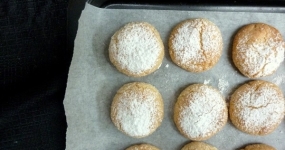 Amaretti – The no-fuss treat posted on November 18, 2010
Amaretti – The no-fuss treat posted on November 18, 2010 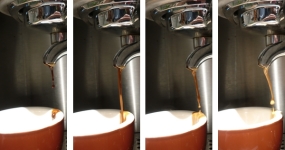 5 tips for perfect espresso posted on November 23, 2010
5 tips for perfect espresso posted on November 23, 2010  Boysenberry Banana Sorbet posted on November 26, 2010
Boysenberry Banana Sorbet posted on November 26, 2010 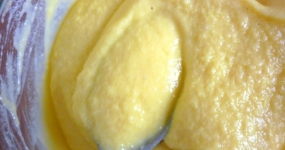 Rich Portuguese Custard posted on November 29, 2010
Rich Portuguese Custard posted on November 29, 2010 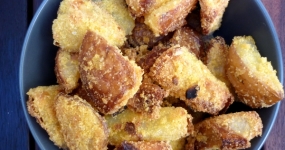 Desert Island Potatos posted on December 3, 2010
Desert Island Potatos posted on December 3, 2010 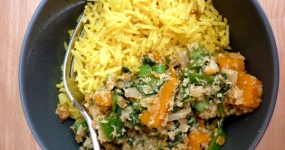 Sri Lankan Spinach with Coconut posted on December 10, 2010
Sri Lankan Spinach with Coconut posted on December 10, 2010 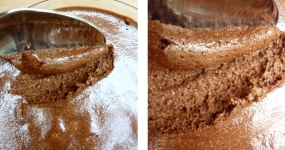 Mousse Chocolate and other peoples’ families posted on December 15, 2010
Mousse Chocolate and other peoples’ families posted on December 15, 2010 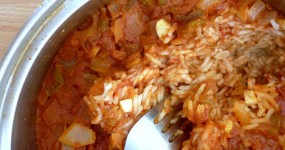 The quest for Mex part 1 – Mexican Red Rice posted on December 17, 2010
The quest for Mex part 1 – Mexican Red Rice posted on December 17, 2010
Disclaimer:
All opinions in this blog are mine, an everyday, real-life person. I do not accept payment for reviews and nor do I write sponsored posts. I do not endorse the content of the comments herein.

